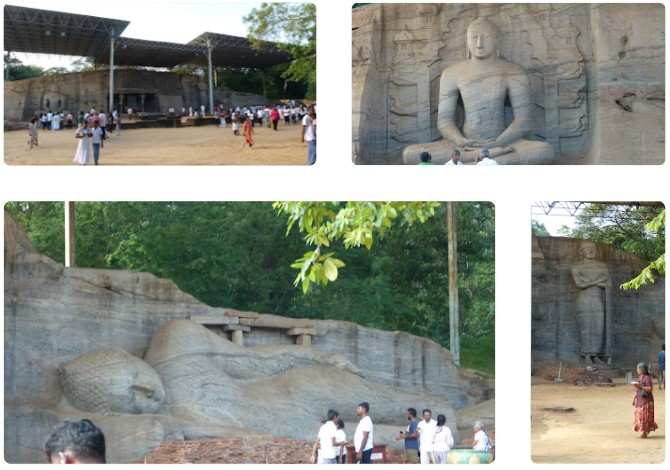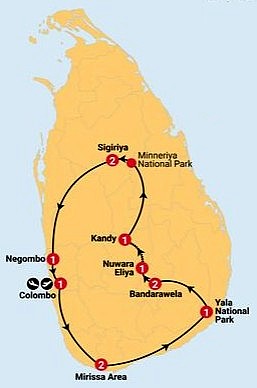Sigiriya
From the highlands we descended to Sigiriya, location of the ancient capital and of the Dambulla Cave Temples dating from the second century BCE. The largest of these has been dated to circa 80 BCE.
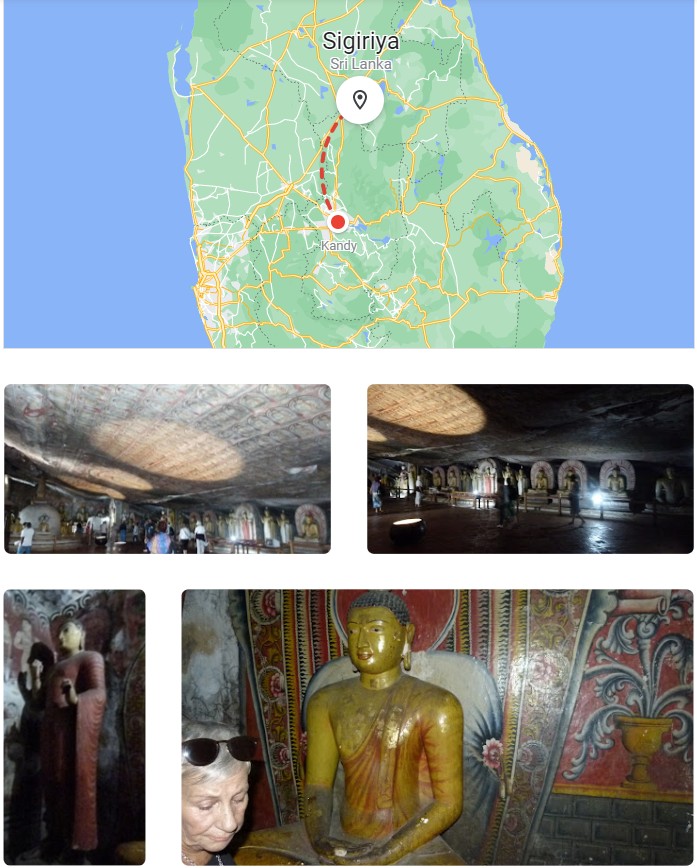
The Dambulla Cave Temples are a massive undertaking - extending over more than two thousand years.
According to Wikipedia the official religion of Sri Lanka is Buddhism (70.2% of the population) with other religions relative late commers as follows: Hinduism 12.6%; Islam 9.7%; Christianity 7.4%; Other/None 0.1%.
I fall into the last group and, when we travel (for example to Egypt or Greece or Cambodia or Myanmar), I often look on in wonder at the vastness of human life and physical resources that have been consumed in pursuit of... what? Nirvana; eternity; prestige; or dare I say: power over others?
The Sigiriya Jungles Hotel is also close to the Minneriya National Park, noted for its elephants. On our way we encountered one on the side of the road - exciting we thought.
Very soon we would join a 'safari' and see many more, a lot closer.

Back at the hotel. a chef showed us how to cook half a dozen different curries. There were some interesting cooking tips. The product was a bit lost on me but Wendy enjoyed them.
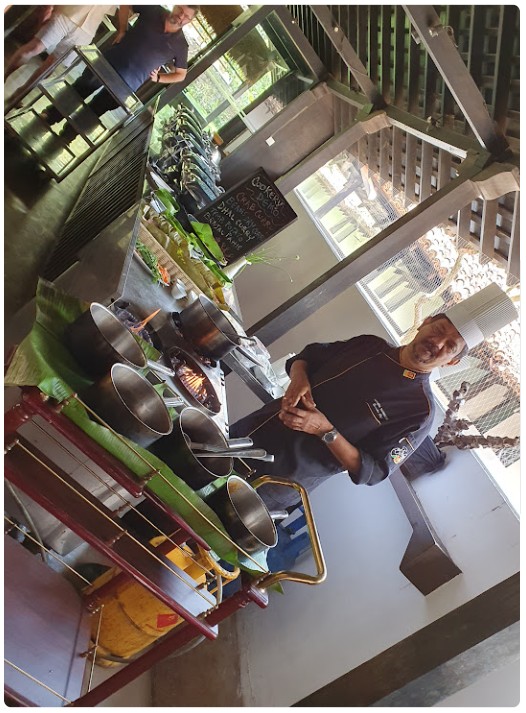
Sigiriya is also the location of the famous Rock Fortress and the nearby ruins of the ancient capital of Polonnaruwa (both UNESCO heritage sites).
The next day, those who wanted to climb the Rock Fortress did so. But the 5am start deterred us and schadenfreude was on our side - it was too misty to see the promised vista.
After a leisurely breakfast, awaiting the early bird's return, we all visited the similarly ancient medieval ruins of Polonnaruwa. We started with a visit to the 'great' king - carved in stone.
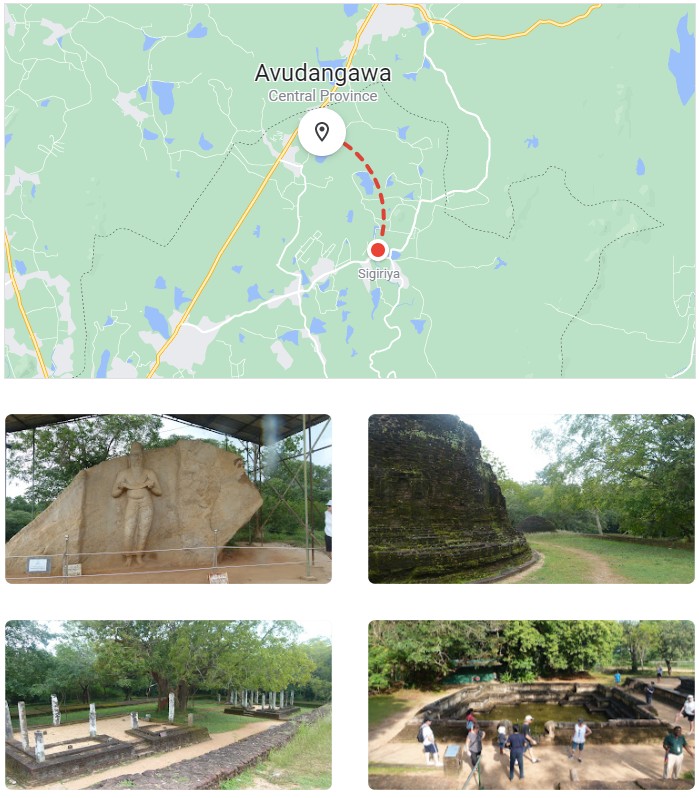
I was impressed by the vast quantities of kiln-fired bricks, of several different dimensions, suggesting construction over a considerable period - some perhaps modern (?) - involved in these structures.
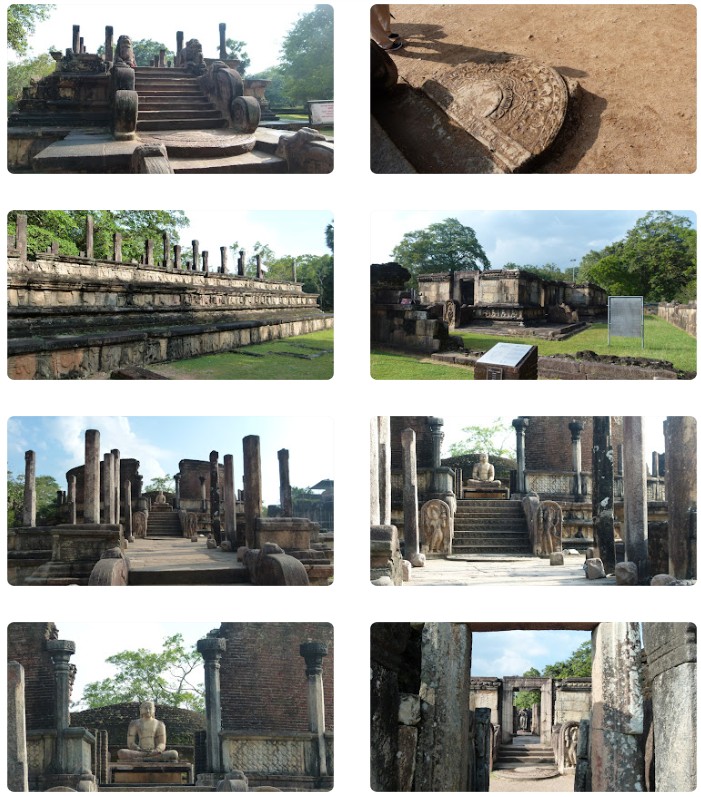
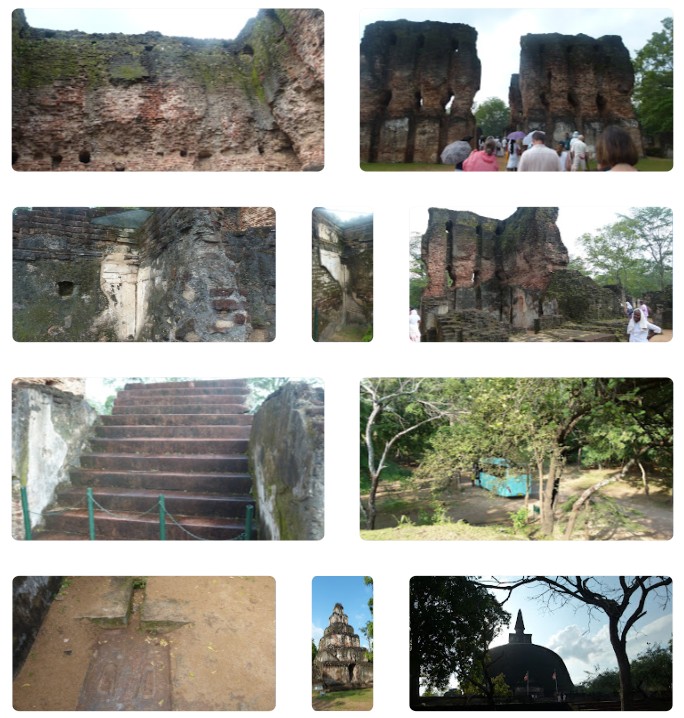
The pyramid-shaped, seven storied building, above, is thought to be an unusually shaped stupa, built during the Polonnaruwa Period (11th -13th century).
Similar Stupa’s can be seen in Cambodia and Thailand. So, it's thought this was built for Cambodian soldiers who were mercenaries employed by the great king.
The huge bun-shaped stupa is the largest all-brick stupa in the world.
Below is another temple complex. I photographed it from a distance as I was wearing shorts and Buddhists are offended by bare knees. Previously, I'd wrapped them up but by this stage I was Buddha'd out.
